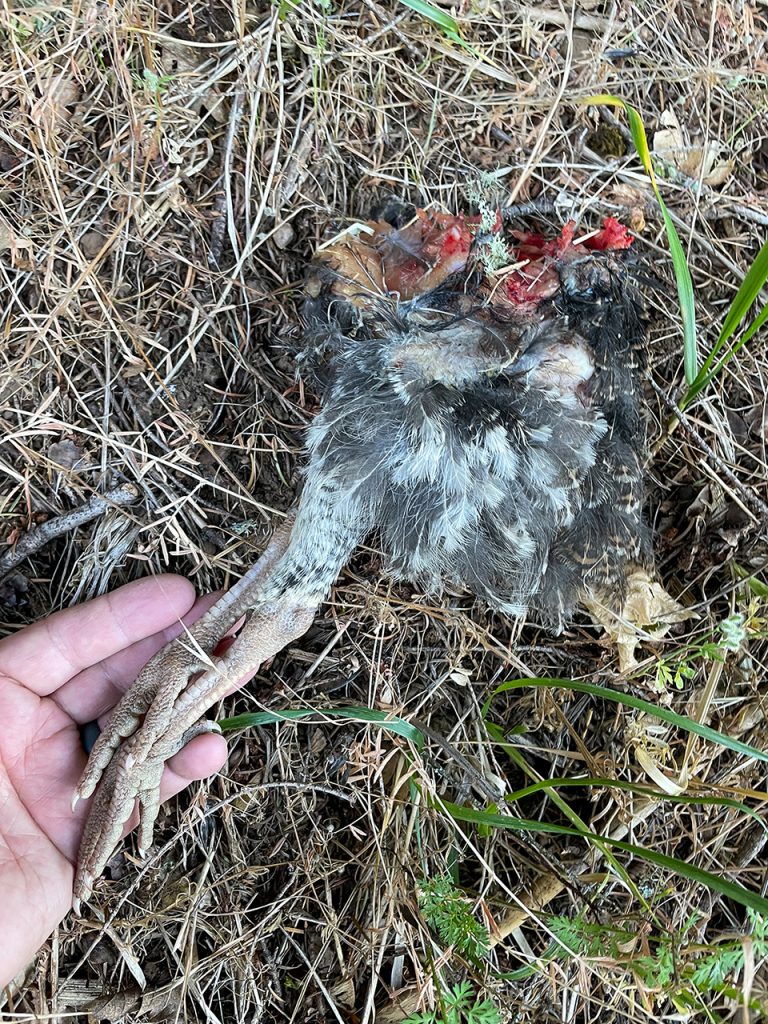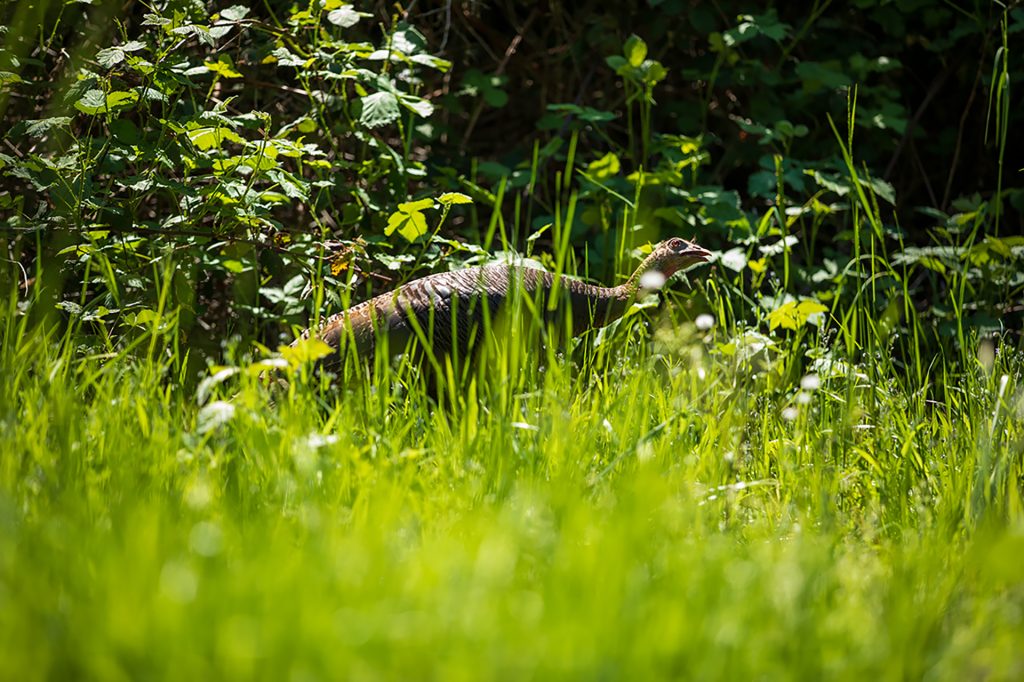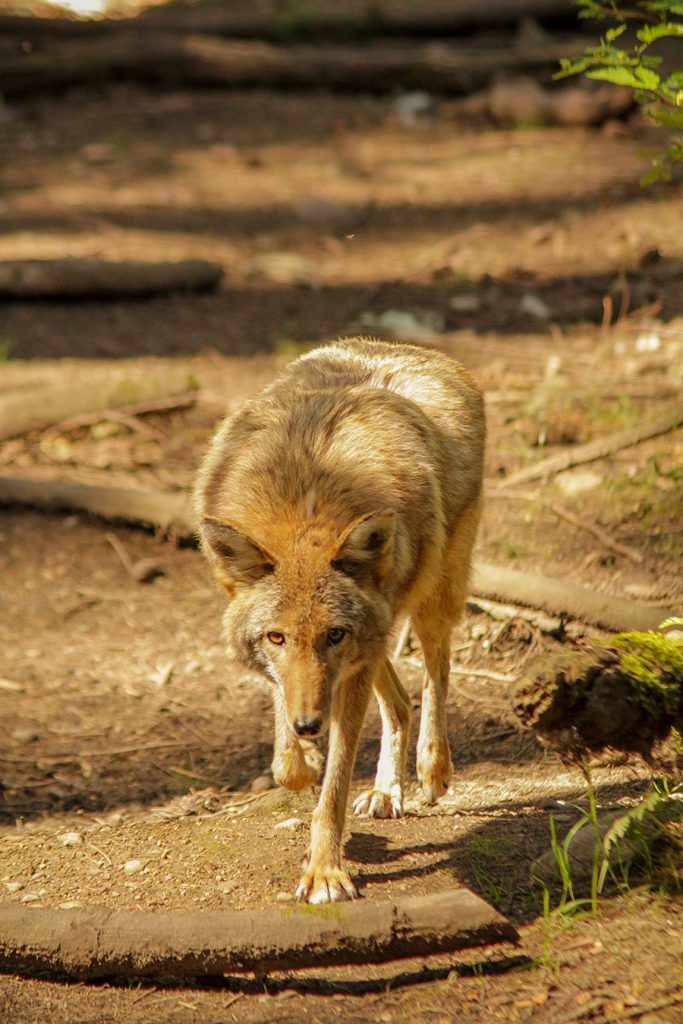Predator Impacts
Having good turkey habitat and monitoring/ reducing the impact predators have in your region can help enhance populations.
It was May 17 when a hen with newly hatched chicks first appeared. By June 2, six more hens showed up, each with tiny turkeys in tow. There were 67 chicks, in total.
In years past I’d seen chicks arrive as early as the last week of April in this area. A wet, cold spring is what I credited last season’s late arrivals to. With just over 9.5 chicks per hen, it was a promising hatch. After all, a late hatch meant more food, nicer weather and taller, more dense cover to hide in.
By June 17, one hen had four poults and another hen had only one. The single poult was killed that night. The only surviving poults of the 67 were the four, and she kept them alive by relocating into a thick, coniferous forest.

I’d been keeping a watchful eye on the broods, in-person and with multiple trail cameras. Every day poult numbers declined. Every day a bobcat, coyote or gray fox appeared on at least one trail camera. Then there were other predators.
Once the poults were old enough to roost in trees, trail cameras showed bobcats hunting in the night. They’d walk by, heads looking up into the trees. Trail cameras also captured two species of raptors swooping in on poults, and I watched a red-tailed hawk, ravens and crows claim other poults.

The hens soon disappeared. In late July, one hen reappeared with five tiny chicks running behind her. They popped up on a trail camera I had set for elk, in a very brushy, timbered area. Over the next two months, more hens appeared, all with poults of various ages. They averaged just over five poults per clutch.
The last chicks appeared in late September. More times than once over the years, chicks have hatched as late as the first week of October in this area. By Thanksgiving, 26 turkeys made up the winter flock. The re-nesting efforts by hens never ceases to amaze me.

Coyotes are the only predators that can be hunted year-round here in Oregon. This means gray fox and bobcat hunting has to wait until winter, when fur-bearers can be hunted and trapped. There’s even a fall season for crows.

Calling coyotes in July and August is a great time to manage their numbers as they’re hungry and respond well to calls. While you’re not going to deplete the coyote population for good, you can offer some relief for turkeys.
Adult turkeys fall prey to predators, too, especially protective hens. Last summer I found where a hen had been killed by a predator. I presumed it was a coyote based on the kill site, fresh scat on a trail, and tracks along a nearby creek.
If there are enough rodents, squirrels and rabbits in a habitat, gray fox, bobcat and coyotes will thrive all year. And don’t underestimate the impact skunks, raccoons and opossums can have on turkey nests.
We can’t thwart raptors. With the warming climate that’s evident in the West, raptor numbers are booming, a direct correlation to high rodent populations. I’m seeing more raptors and different species than ever before. There’s no doubt, turkeys are relocating to thicker cover to escape birds of prey, along with terrestrial predators.
While it seems chicks hatching in late summer and early fall may have little chance of survival with winter just around the corner, keep in mind that this is also a time when high-protein food sources abound. Grasshoppers, berries, fruits and nuts allow poults to grow fast and strong. When early fall rains come, earthworms, caterpillars and other insects expand a turkey’s dietary intake.
If they’re half-grown by late October, poults have a good chance of surviving the winter in my areas of observation. Late-arriving winter conditions over the past decade have helped their cause.
Impacting predator numbers is something hunters and especially trappers, can do. While we can’t control predators of the sky, by being aware of what’s out there and understanding how it impacts turkey populations, we will gain a more comprehensive understanding of how resilient turkeys are. Subsequently, we’ll discover where turkeys relocate, know why, and in the end, find new places to hunt these resilient birds.
Note: For signed copies of Scott Haugen’s popular book,Western Turkey Hunting: Strategies For All Levels, visit scotthaugen.com. Follow Scott on Instagram and Facebook.
CONNECT WITH US
National Wild Turkey Federation
770 Augusta Road, Edgefield, SC 29824
(800) 843-6983
National Wild Turkey Federation. All rights reserved.
